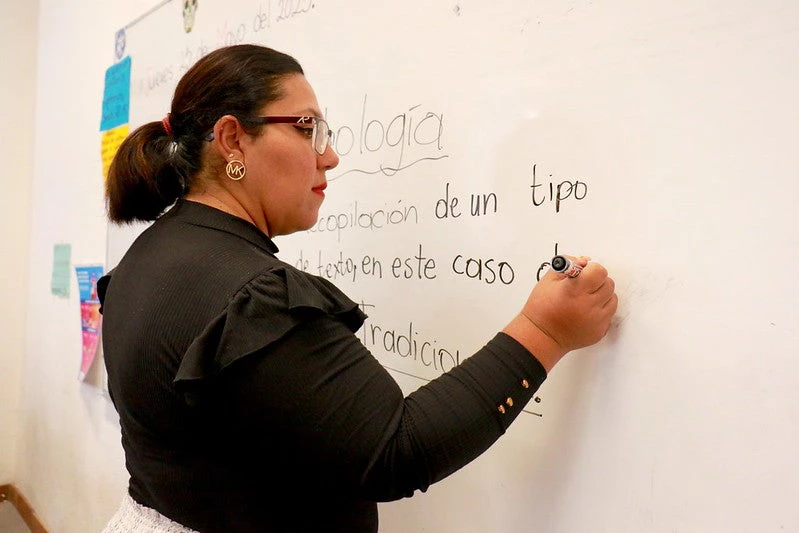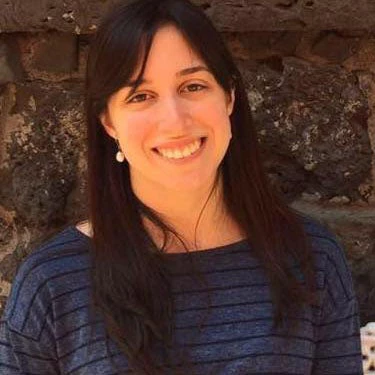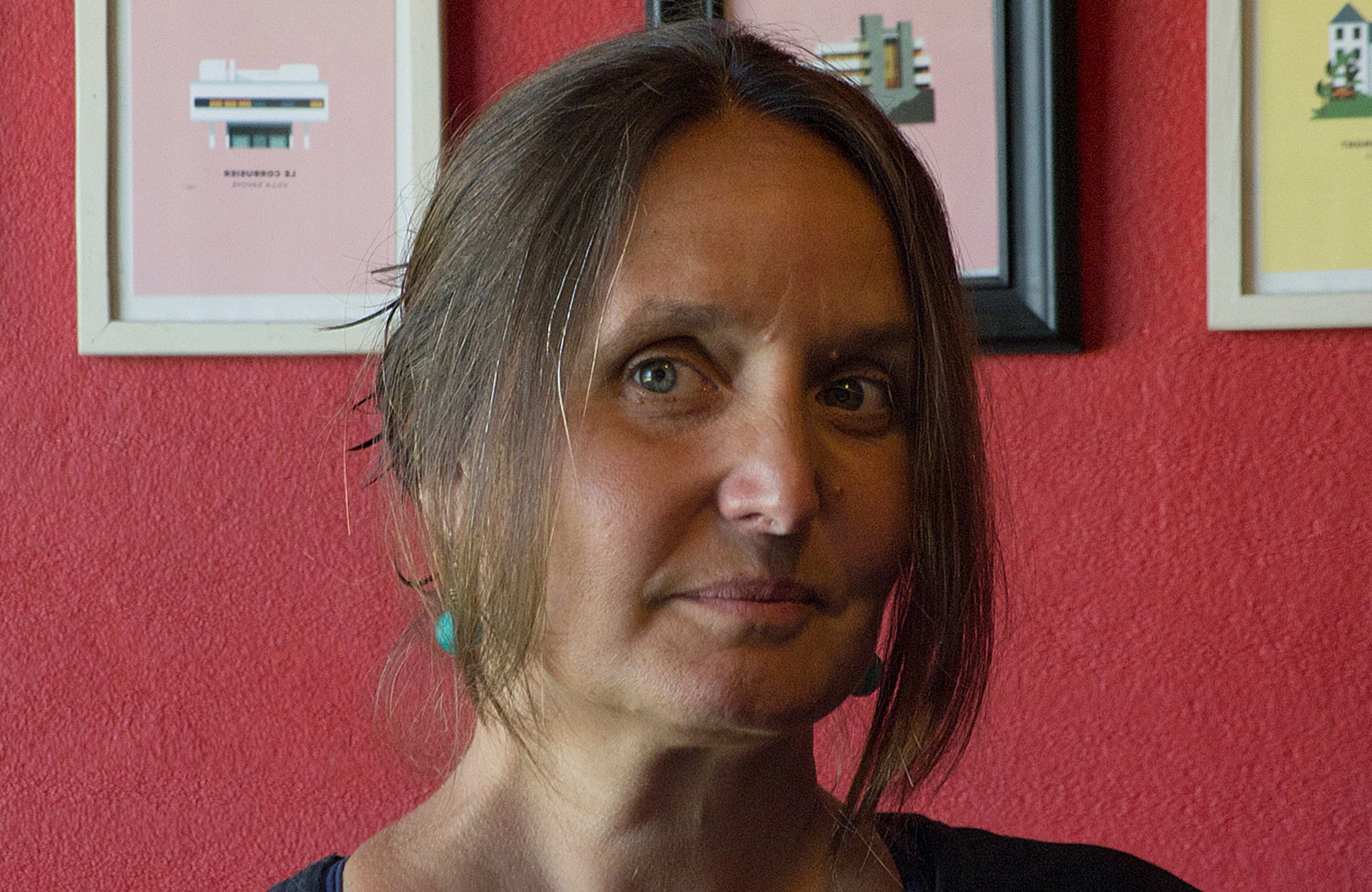 Docente escribiendo en la pizarra de una escuela primaria en Guanajuato, México.
Docente escribiendo en la pizarra de una escuela primaria en Guanajuato, México.
Put yourself in the shoes of an education policymaker today. Around the world, policymakers like yourself are urgently designing and implementing reforms, policies, and programs to help education systems recover and build back better after the COVID-19 pandemic. How can you support teachers in your context, so that they are better equipped to help students make up for lost learning during the pandemic?
You know that this requires supporting teachers through professional development (PD) programs to strengthen their classroom practice. But how can you design a teacher PD program that achieves this? What are the components of professional development programs that contribute to a meaningful learning experience for the teacher, that she or he can then translate back to their classroom practice? How this type of program be designed at scale so that it can reach as many teachers and students in your context as possible? And how should it be designed considering limitations like cost, access (both physical and technological), and the capacities of existing actors within the system?
- PD programs must be carefully designed to support, equip, motivate, and empower teachers to strengthen their pedagogical practice in a meaningful way. Many teacher PD programs today are not effective in helping them strengthen their pedagogical practice: Evidence from a meta-analysis of PD programs in low- and middle-income countries shows that many programs did not contribute to improving student learning or teaching quality. Programs that worked best in supporting teachers to help students often share certain characteristics in their design and implementation.
- Teachers face common barriers when seeking to apply learnings from a PD program in their classroom. Changing what one does is never easy. It usually requires building new habits and behaviors, and like any new behavior or habit we seek to build, teachers face barriers in this process. These can be summarized as the What (when teachers are not clear about the new practices they should implement in their classroom), the How (when teachers are clear about what to do differently in their classroom, but do not have the resources or knowledge to do so) and the Why (when teachers are not motivated or do not see the purpose of implementing new teaching strategies in the classroom).
- Knowledge from the field of behavioral science and psychology can be leveraged to design programs that support and equip teachers to overcome these barriers and translate learning into their classrooms. To overcome the What barrier, program leaders can use strategies such as narrowing the focus of a PD program to a couple of teaching skills, to ensure teachers have enough time to master them and incorporate demonstration and modeling so that teachers have a clear vision of how the new teaching skills look like in practice. To help overcome the How barrier, programs can include ample time for teachers to practice, and provide additional support to teachers in bridging the gap to classroom implementation such as by providing 1-1 coaching once teachers are back in their classrooms. And finally, to help overcome the Why barrier, program leaders can leverage social learning and integrate incentives, both monetary and non-monetary.
- The value of good implementation should not be underestimated. The most successful programs spend most of their time and resources on ensuring good implementation on the ground. Effective professional development programs for teachers must be designed in alignment and integrated with existing curriculum and assessment policies ; focusing on implementation at the school level and leveraging the role of actors such as school principals; and integrating technology where relevant to drive impact. Finally, programs must be designed and implemented with a view to sustainability and scaling up in the future.
- Learning from other successful experiences is key. There is much to learn from successful teacher PD programs around the world, which have innovated to support teachers and effective teaching. In Latin America, these include the Estrategia de Aprendizaje de Matemática in El Salvador, the Aprendamos Todos a Leer (ATAL) program in Colombia, and the Programa de Acompañamiento Pedagógico in Peru. As education leaders continue to work to recover and accelerate learning and respond to the current educational crisis, it will be important to learn from successful experiences in the region and globally on how best to support teachers to strengthen their practice.
These five takeaways on how to support teachers to improve teaching were collected from the recent Regional Workshop: A Classroom-Centered Approach to Accelerate Learning, which brought together education policymakers in the region to discuss how to improve in-service teacher professional development programs. The event built on the Commitment to Action on foundational learning and its recovery, Latin America and the Caribbean Commit (ALCC), and was made possible thanks to the Foundational Learning Compact (FLC).
To learn more about the workshop, take a look at the video summary of the event here (in Spanish), as well as a playlist (in Spanish) including short talks from experts on this topic.
Stay updated with our weekly article
Related articles:




Join the Conversation